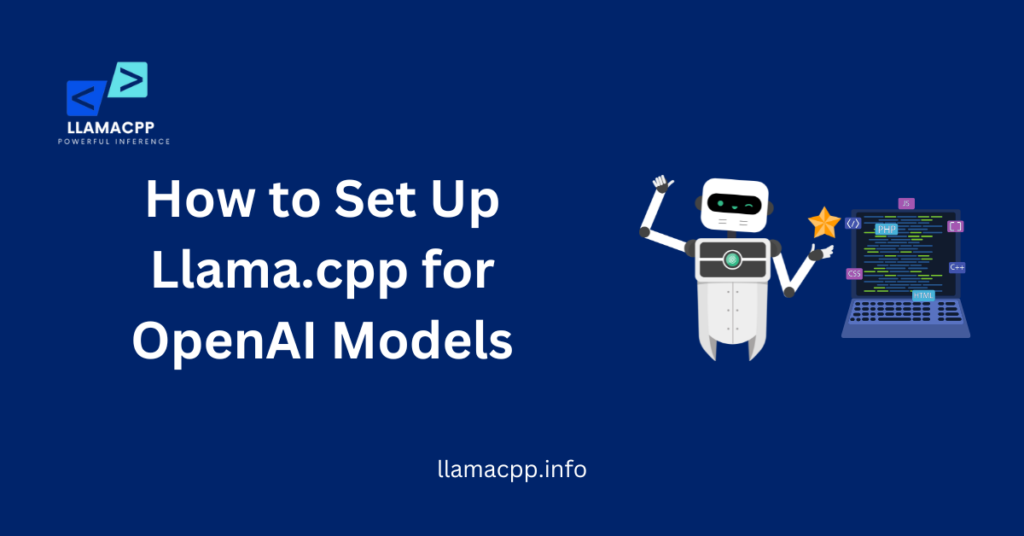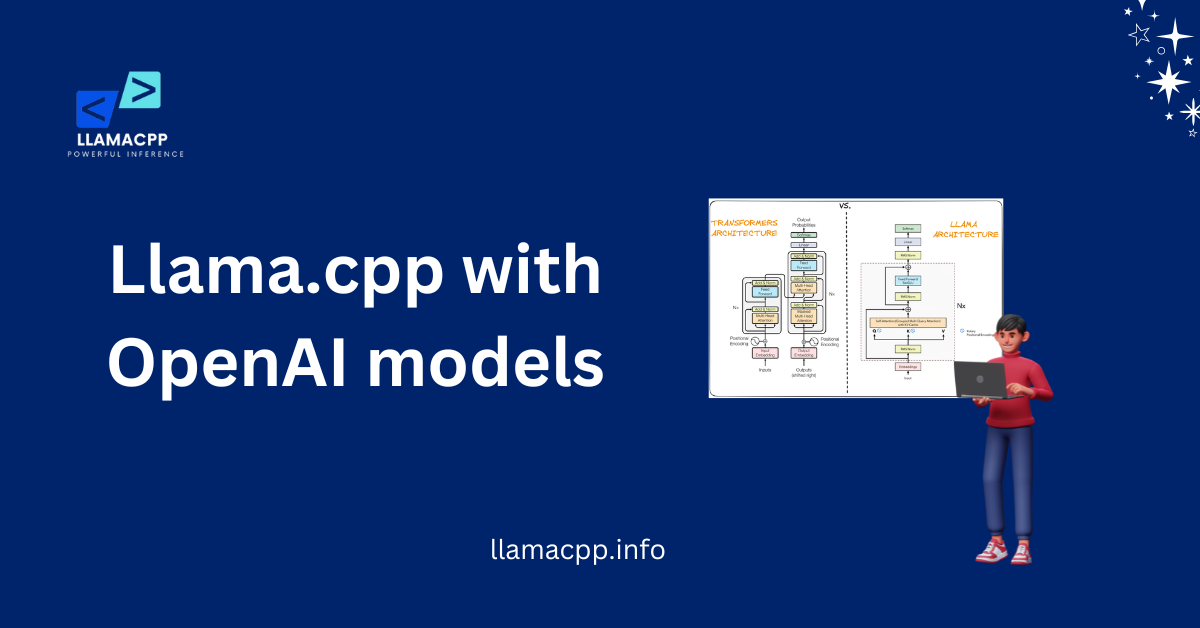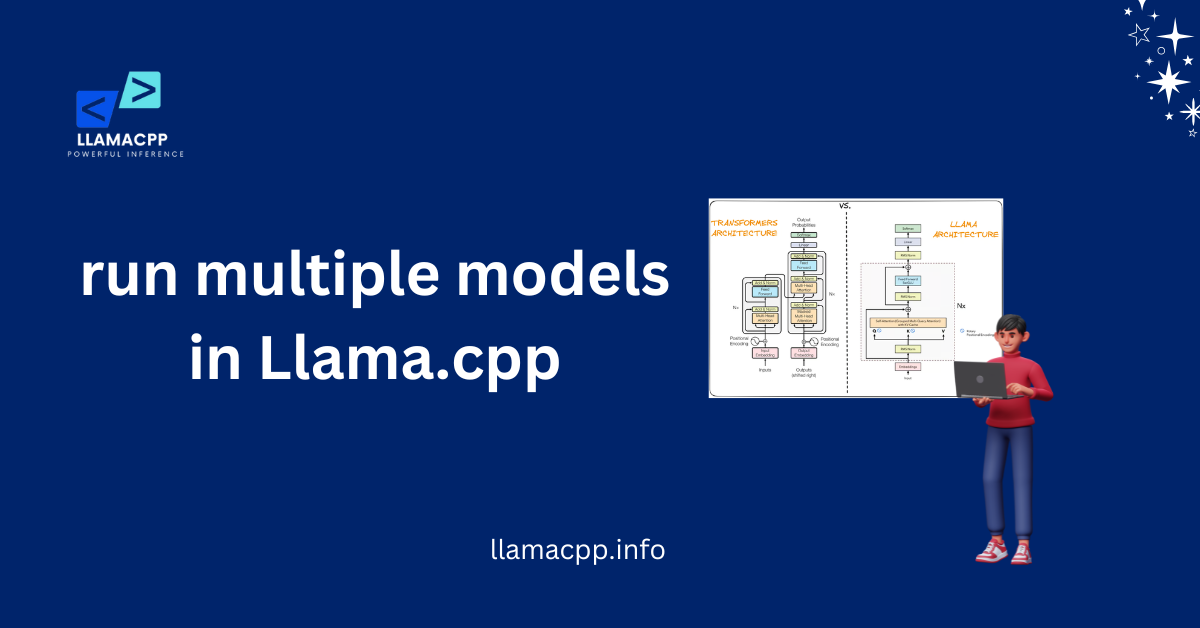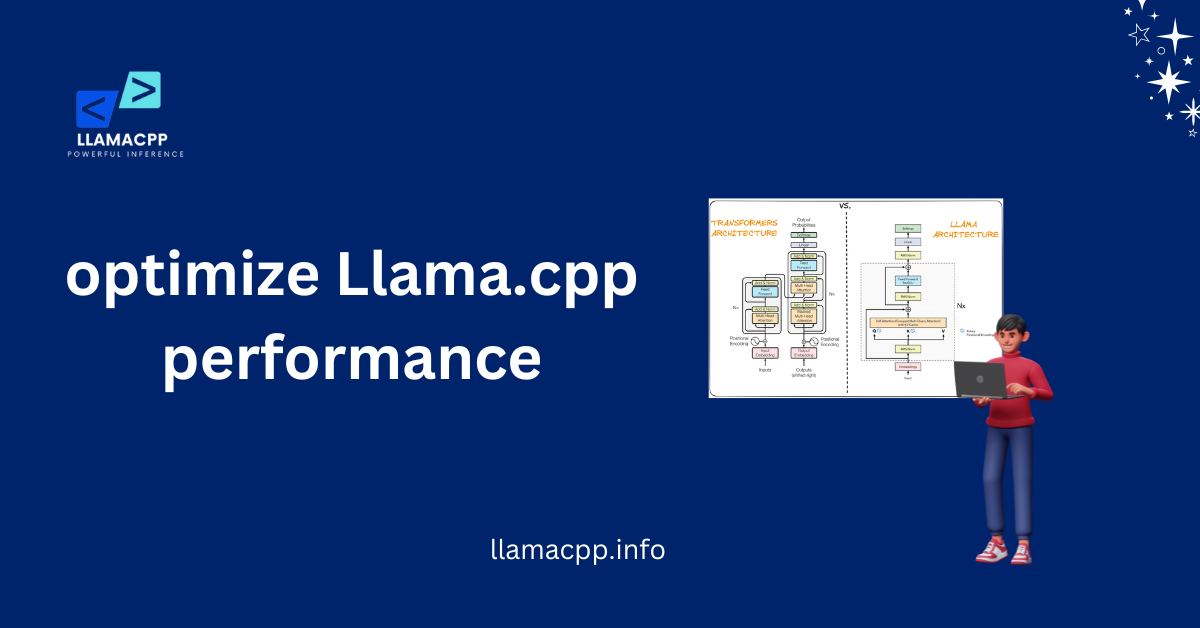Table of Contents
ToggleIntroduction
A great way to run AI models on your device is with Llama.cpp with OpenAI models. This setup lets you be more in charge and prevents you from having to rely on cloud services. It is a great setup if you like AI and want to try models close to home. You can use it for study, development, or just for fun. It works well on regular computers, too, which makes it a good choice.
Llama.cpp is a C++ tool that helps run AI models efficiently. It has more power and can be changed more when you connect it to OpenAI models. This setup lets you tweak models the way you want. It also saves money by cutting down on cloud use. In this guide, you will learn how to set up, use, and fix problems with Llama.cpp and OpenAI models.
What is Llama.cpp and How Does It Work?
You can run AI models on your device with Llama.cpp, which is a simple but powerful tool. It is written in C++ and works well on different computers, even without a high-end GPU. With this tool, you don’t have to rely on cloud services. This makes it an excellent pick for AI users and developers who want more power.
One great thing about Llama.cpp with OpenAI models is how fast and well it works. It helps run large AI models smoothly while using less memory. Whether you are testing AI, making applications, or fine-tuning models, this setup gives you flexibility.
1. Runs AI Models on Your Device
With Llama.cpp, you can run AI models right on your computer. It does not need an internet connection all the time, unlike cloud-based AI tools. So it’s great for projects that you can’t do online.
You can write text, answer questions, and do AI jobs with Llama.cpp and OpenAI models without having to send your data online. This protects and keeps your work secret.
2. Fast and Efficient Performance
Llama.cpp is designed to be small and fast. It does not need a powerful machine to run. Even on basic hardware, it works smoothly.
It can do AI tasks quickly when used with Llama.cpp and OpenAI models. It dashes and needs less memory, so you can use it to make chatbots or test AI responses.
3. Works with Many AI Models
Llama.cpp is not limited to just one AI model. It works with different kinds of LLaMA and other AI models, giving developers many options for how to use it.
With Llama.cpp and OpenAI models, you can test and fine-tune AI quickly. You get more power over how the AI works and can experiment with different models.
Why Use Llama.cpp with OpenAI Models?
While AI models are powerful, they often need pricey gear or cloud services to work. Optimize Llama.cpp performance with OpenAI models makes it easier to run AI on your device. When you’re not online, you can work on your AI projects without paying for anyone to help you.
This setup is great for developers, researchers, and AI enthusiasts. It gives flexibility, privacy, and efficiency. Whether you are testing models or building AI-powered applications, this tool gives you more freedom.
1. No Need for Expensive Cloud Services
Many AI tools use cloud computing, which can be pricey. Running AI models on your own computer helps you avoid these charges.
With Llama.cpp and OpenAI models, you don’t need to pay for cloud-based processing. Thanks to this, people and small teams can now afford AI more.
2. Can Be Used Offline for More Privacy:
Cloud services store and process data online, which may make people worry about their privacy. If you run AI locally, your info will stay on your device.
You can process text and make replies with Llama.cpp and OpenAI models without sending data to outside servers. This will protect your work.
3. Faster and more straightforward to switch between
When using cloud AI, you depend on internet speed and server availability. Running AI locally removes these limits and gives more freedom.
With Llama.cpp and OpenAI models, you can tweak settings, adjust performance, and optimize AI behavior, which makes them great for creating your own AI apps.

How to Set Up Llama.cpp for OpenAI Models
It’s simple to start using Llama.cpp with OpenAI datasets. You need to install the tool, download the right model, and change the settings. With this setup, you can use your computer to run AI models. You don’t need cloud services, which means more privacy and control.
Setting it up is easy, whether you are a beginner or an expert. The steps are straightforward. You need a few fundamental orders, and your AI model will be ready to use. Let’s go through each step to make sure everything runs smoothly.
1. Install Llama.cpp on Your Device
First, you must install Llama.cpp. It works on Windows, macOS, and Linux. The installation doesn’t take long and doesn’t require a powerful computer.
Suppose you want to use Llama. CPP with OpenAI models gets the most recent version from the source. Follow the installation guide for your system. Once launched, you are ready to proceed to the next step.
2. Download and Load the AI Model
Llama.cpp does not come with built-in models. You need to download the AI model files separately. These files hold the intelligence required for processing tasks.
With Llama.cpp and OpenAI models, you can choose different forms based on your needs. After downloading, put the files where they belong. Then, use a simple script to load the model into Llama.cpp working mechanism.
3. Set up the settings for the best performance
For smooth operation, adjust the settings. Parameters let you change how fast, accurately, and how much memory is used.
Using Llama.cpp with OpenAI models allows you to fine-tune responses. Set it up based on your system’s capability. This helps you get the best results without slowing down your device.
OpenAI models are being run on Llama.cpp
You can start running AI tasks once you have set up Llama.cpp with OpenAI models. You can use this tool to process text, make content, and do other AI tasks on your computer. Unlike cloud-based AI, it works offline, giving you more control and privacy.
Running an AI model on Llama.cpp is simple. Load the model, enter a command, and let the AI generate responses. You can use it for writing, coding, or answering questions. Let’s go through the steps to run OpenAI models smoothly.
1. Put the AI Model into Llama.cpp mode.
Before you run the AI, you need to put the model into the system. This tells Llama.cpp which AI model to use.
Loading is easy with Llama.cpp with OpenAI models. Just use a simple command to point to the model file. When you load it, the AI is ready to work.
2. Enter a Prompt to Get AI Responses
You have to give input to the AI in order to talk to it. This is known as a prompt. The AI reads the prompt and generates a response.
You can type questions, sentences, or commands with Llama.cpp and OpenAI models. The AI will then analyze them and make relevant output.
3. Adjust Settings for Better Output
Tweak the settings for best results. You can control factors like response length, creativity, and speed.
Adjusting parameters is easy with Llama.cpp with OpenAI models. This helps you get responses that are accurate and useful for your needs.
Optimizing Performance and Troubleshooting
To get the best results from Llama.cpp with OpenAI models, you need to make sure it goes smoothly. The correct settings can improve speed, accuracy, and economy. Make some changes to your system, and you can still get good results, even if it’s not very fast.
You may run into mistakes or slow replies from time to time. These issues are common and can be fixed easily. You can make sure that your AI model works appropriately by following a few easy steps. Let’s look at ways to resolve problems and make things work better.
1. Change the settings to speed up processing.
Different settings in Lama.cpp control how the AI works. Changing these settings can help improve speed.
When using Llama.cpp with OpenAI models, lowering the batch size can stop lag. Taking some of the work off of your system will help it run faster. You can also adjust memory usage for better speed.
2. Quickly fix common mistakes
Errors can occur if files are missing or commands are wrong. Checking error messages can help you understand what went wrong.
When you use OpenAI models with Llama and cpp, make sure that all the files are in the right place. If the tool gives you an error, try restarting it or getting the latest version.
3. Make the output better
Sometimes, AI answers may not be apparent or valuable. You can fix this by changing specific settings.
If you change the temperature setting in Llama.cpp with OpenAI models, answers can be more creative or focused. When the temperature is low, people give direct answers. When the temperature is high, people give more varied answers.
Conclusion
Using Llama.cpp with OpenAI models is a smart choice for those who want flexibility and control over AI models. It can be used without an internet connection, lets you change settings, and can help you with many things, such as writing text, coding, and asking questions. It enables you to run models directly on your device, which is different from cloud-based AI tools, and gives you more privacy and faster response times. With the proper setup, you can maximize its ability and get high-quality results.
To get the most out of Llama.cpp with OpenAI models, work on improving speed and fixing bugs. Adjust settings for better speed, reduce errors by checking logs, and try different options to improve output. If you face any issues, simple fixes like updating files or modifying parameters can help. With patience and practice, you can turn this tool into a powerful AI assistant that meets your unique needs.
FAQs
1. What is Llama.cpp, and how does it work with OpenAI models?
Llama.cpp is a lightweight tool that allows you to run AI models on your local computer. When combined with OpenAI models, it makes it possible to generate text efficiently, get help with coding, and do other things without using cloud services.
2. Why should I use Llama.cpp with OpenAI models?
Using Llama.cpp with OpenAI models gives you more control, privacy, and freedom. It works offline, is highly customizable, and allows faster processing without internet dependency.
3. How do I run Llama.cpp and set it up for OpenAI models?
You need to get Llama.cpp, install the dependencies it needs, and then load the model files. Configuration settings like batch size and memory allocation should be adjusted based on your system’s powers.
4. What are the common issues with Llama.cpp, and how can I fix them?
Errors may occur due to missing files, incorrect orders, or memory limits. Most problems can be fixed by looking at error logs, installing new software, and changing performance settings.
5. What can I do to make Llama.cpp run faster with OpenAI models?
Adjusting settings like temperature, batch size, and token limits can optimize performance. Using compatible hardware, keeping software up to date, and reducing the amount of work required will also help speed and accuracy.




















